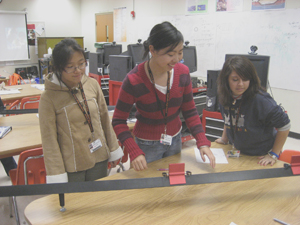|
Essential Question:
How can you best prepare for the
test? |
Review of Objectives 1- 19 (1-3 days)
Formative Assessments:
-
Work review problems at the board.
-
Work practice problems.
Metacognition Problem Solving Question:
Can I still work the problems done in class, several hours
or days later?
Some amount of repetition on the exact same problems is necessary to lock in
learning. It is often better to thoroughly understand a single example of a
problem type than to work example after example understanding none of them
completely.
Relevance: Good test preparation is
essential to performance in physics class.
Homefun (formative/summative assessment): problems 81, 89, 91, 59 pages 193-194;
problems turn in on the day stapled to the back of the test.
Summative Assessment: Unit exam objectives 1-23 |
 SC Standards
:
SC Standards
: